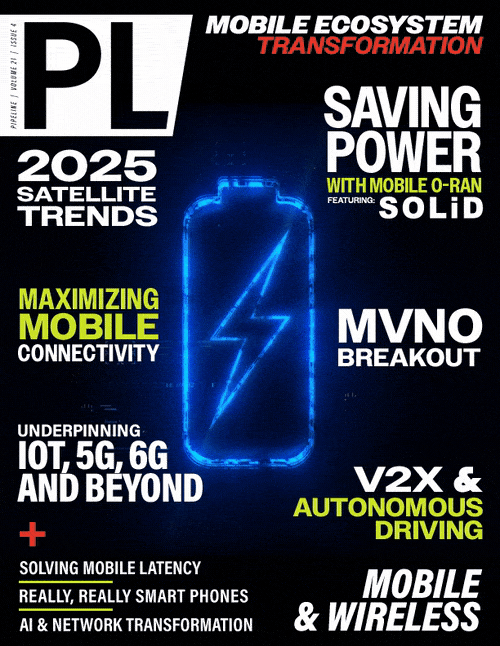Why 2025 Will Be a Breakout Year
for U.S. MVNOs
By: Liz Parry

The Mobile Virtual Network Operator (MVNO) industry is undergoing a significant transformation, with challenges and opportunities paving the way for growth. Juniper Research forecasts that MVNO revenue from mobile subscribers in the U.S. will grow from $18.7 billion in 2024 to $26.3 billion in 2029. This compound annual growth rate underscores the immense potential in this space. MVNOs are no longer just alternative providers; they are becoming critical players in reshaping how connectivity is delivered and consumed. Whether through innovative pricing models, niche customer segments, or groundbreaking technology, the future belongs to those who act now.
But what is driving this evolution? Why does the U.S. represent such a fertile breeding ground, and why now?
Why the U.S. is the Ultimate Growth Market for MVNOs
The U.S. telecom market stands out globally for its high average revenue per user (ARPU), which makes it one of the most attractive markets for MVNOs. Customers in the U.S. are accustomed to premium services and are willing to pay for better connectivity, personalized plans, and added value. This creates an opportunity for MVNOs to carve out their niche by delivering tailored, high-quality offerings. Even in 2024, the U.S's average revenue per MVNO user was four times higher than the rest of the world, standing at a massive $31.59 compared to just over seven dollars elsewhere. As a result, the number of mobile subscribers necessary to sustain an MVNO is lower, allowing a wider range of enterprises to enter the market.
Another unique characteristic of the U.S. market is the abundance of mid-to-large-scale enterprises. These organizations represent untapped potential for MVNOs, whether by offering corporate connectivity solutions, employee-focused telecom plans, or B2B data services. Companies are actively looking for cost-effective and customizable telecom solutions, and MVNOs are perfectly positioned to deliver. Moreover, the high number of B2C enterprises in the U.S. with an existing customer base and brand recognition means that many more have the potential to launch an MVNO effectively.
Unlike in European markets, the U.S. regulatory environment has been relatively favorable over the years, promoting competition and encouraging innovation. An existing competitive and diverse MVNO market means that operators and regulators are receptive to MVNO launches. Policies such as spectrum sharing and the push for more transparent wholesale agreements have lowered barriers for new entrants and created a fertile environment for both traditional MVNOs and emerging neo-telecom players.
The U.S. also has a diverse, open telecom landscape that welcomes innovation, unlike other markets that are dominated by a few influential players. The consumer base is equally diverse, with a wide range of different demographics with varying needs — from affordable plans for budget-conscious users to data-heavy options for tech-savvy individuals and enterprises. This diversity offers enterprises considerable opportunities to launch MVNOs focused on optimizing their services for specific demographics, while market openness allows MVNOs to explore creative propositions and serve specific market segments effectively.
The convergence of these factors — high ARPU, a vibrant enterprise ecosystem, supportive regulation, and a diverse market — makes 2025 the perfect time to capitalize on the MVNO opportunity. For those ready to innovate and adapt, this is a chance to create lasting impact and drive profitability in a highly competitive yet rewarding sector. However, at this pivotal moment of transformation in the industry, it is crucial to understand what it takes to be a successful MVNO.
MVNO Success Criteria
The MVNO model lowers the barriers to entry compared to traditional mobile network operators (MNOs). It enables brands to enter the telecom space without needing physical network infrastructure. However, success depends on more than just having access to a network. It requires a clear strategy, the right resources, and a strong market presence.
Successful MVNOs frequently have an existing customer base. For example, retailers like Walmart leverage their retail footprint and customer trust to offer MVNO services. Walmart Family Mobile is a prime example of using its brand's reach to provide affordable and convenient telecom options. Utilities, insurance providers, or even financial institutions also do well when bundling MVNO services with their core offerings, creating a seamless experience for customers.
Brands with an established and loyal customer base have a significant advantage, reducing marketing costs and also increasing the likelihood of customer retention. Indeed, marketing can be one of the most significant expenses for any telecom business. Established brands entering the MVNO space benefit from cost-effective marketing strategies, leveraging existing channels to introduce their MVNO services to a receptive audience. They differentiate themselves by offering services that align with their brand identity and cater to their audience's unique needs, creating new revenue streams while deepening customer engagement with their core business.



















